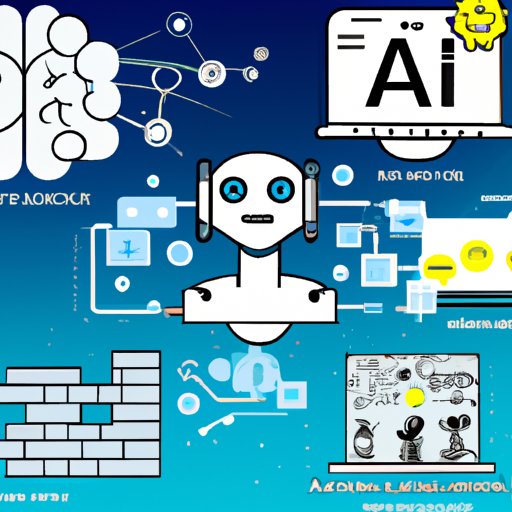Introduction
Artificial intelligence (AI) is a rapidly developing technology that has the potential to revolutionize many industries. From healthcare and finance to marketing and retail, AI has the power to automate complex tasks and provide useful insights. As such, it’s no wonder why so many people are interested in creating their own AI systems.
In this article, we’ll explore the steps required to create your own AI system. We’ll look at the different types of AI, the necessary hardware and software components, available data sources, and some examples of AI projects.
Identify Different Types of AI and Their Uses
Before you can begin creating your own AI system, it’s important to understand the different types of AI and how they’re used. There are two main categories of AI: narrow AI and general AI. Narrow AI is focused on performing one task, such as facial recognition or natural language processing. On the other hand, general AI is capable of performing multiple tasks and adapting to new situations.
For example, deep learning is a type of AI that uses neural networks to learn from data and make decisions. It’s used for applications such as image recognition, voice recognition, and autonomous driving. Machine learning is another type of AI that uses algorithms to identify patterns in data and make predictions. It’s used in areas such as finance, healthcare, and customer service.

Explain Necessary Hardware and Software Components
Creating your own AI system requires both hardware and software components. On the hardware side, you’ll need a powerful computer with a lot of RAM and storage space. You’ll also need GPUs to help speed up the training process. On the software side, you’ll need an AI platform, such as TensorFlow or PyTorch, and a programming language, such as Python or Java.
In addition to the hardware and software components, you’ll also need access to large amounts of data. This data will be used to train your AI system so that it can make accurate predictions and decisions.
Describe Available Data Sources
Data is the lifeblood of any AI system, so it’s important to have access to reliable data sources. There are many publicly available datasets, such as those from Kaggle and UCI Machine Learning Repository, as well as proprietary datasets from companies like Google and Microsoft. Depending on the type of AI system you’re trying to create, you may need to purchase or license data from these sources.
It’s also important to consider the quality of the data you’re using. If the data is noisy or incomplete, it can lead to inaccurate results. Therefore, it’s important to clean and preprocess the data before using it to train your AI system.

Showcase Examples of AI Projects
One of the best ways to learn about creating your own AI system is to look at examples of successful projects. There are many real-world use cases, such as self-driving cars and facial recognition systems, that demonstrate the power of AI. You can also look at demonstration projects, such as Google’s DeepMind and IBM’s Watson, to get an idea of what’s possible.
These examples can provide valuable insight into the development process and can help you understand the challenges and considerations involved in creating your own AI system.
Conclusion
Creating your own AI system is a complex but rewarding process. To get started, you’ll need to identify the different types of AI and their uses, understand the necessary hardware and software components, and familiarize yourself with available data sources. Additionally, by looking at examples of successful AI projects, you can gain valuable insight into the development process.
By taking the time to understand the steps involved in creating your own AI system, you can ensure that your project is a success.
(Note: Is this article not meeting your expectations? Do you have knowledge or insights to share? Unlock new opportunities and expand your reach by joining our authors team. Click Registration to join us and share your expertise with our readers.)
